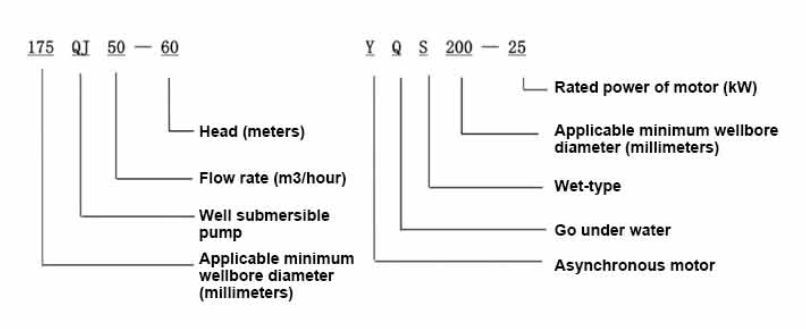Nov . 23, 2024 07:04 Back to list
submersible axial flow pump
Submersible Axial Flow Pumps An Overview
Submersible axial flow pumps are a crucial component in various industrial applications, particularly in water management and fluid handling. These pumps are designed to operate submerged in the fluid they are pumping, making them ideal for applications such as wastewater treatment, irrigation, and dewatering.
The working principle of submersible axial flow pumps is based on the axial movement of fluid, facilitated by a propeller-like rotor. Unlike centrifugal pumps that impart energy to the fluid via a rotating impeller, axial flow pumps use propellers to move fluid parallel to the pump shaft. This design allows for higher flow rates at lower pressure heads, making them suitable for applications that require the transportation of large volumes of liquid over short distances.
One of the major advantages of submersible axial flow pumps is their ability to operate in confined spaces. Being submerged, they eliminate the need for suction pipes and can be placed directly in the fluid source. This feature significantly reduces installation complexity and costs. Additionally, since these pumps are submerged, they are also less prone to cavitation, a common issue with surface pumps, which can lead to reduced efficiency and premature wear.
Submersible axial flow pumps are commonly used in agricultural irrigation systems where high flow rates of water are needed for large land areas. They are also employed in municipal and industrial applications, such as pumping water from rivers, lakes, and reservoirs for various treatment processes. In wastewater treatment plants, these pumps help in transporting sewage and sludge efficiently.
submersible axial flow pump

In terms of design, submersible axial flow pumps are built with materials resistant to corrosion and wear, ensuring longevity and reliability in harsh environments
. Many modern models are equipped with advanced monitoring and control systems, allowing operators to maintain optimal performance and troubleshoot issues remotely. These advancements not only improve efficiency but also extend the lifecycle of the equipment.However, while submersible axial flow pumps come with numerous benefits, they do have some limitations. They are not ideal for applications that require high discharge pressures. Their performance diminishes in high-head scenarios, which can be a drawback in certain industrial settings where considerable elevation needs to be overcome. As a result, careful consideration must be given to the specific requirements of a project when selecting a pump type.
Maintenance is another important factor to consider when using submersible axial flow pumps. Although they are generally low-maintenance, periodic inspections are vital to ensure that the motor and mechanical seals remain in good condition, thereby preventing costly repairs and downtime.
In conclusion, submersible axial flow pumps play an essential role in various sectors by effectively moving fluids under challenging conditions. Their design provides significant advantages in terms of installation and operation, particularly in environments where high flow rates are needed. As technology evolves, these pumps will likely see further enhancements in efficiency and reliability, solidifying their position in fluid handling systems globally. For any project requiring reliable fluid transport solutions, considering submersible axial flow pumps could lead to improved productivity and operational success.
-
Submersible Water Pump: The Efficient 'Power Pioneer' of the Underwater World
NewsJul.01,2025
-
Submersible Pond Pump: The Hidden Guardian of Water Landscape Ecology
NewsJul.01,2025
-
Stainless Well Pump: A Reliable and Durable Pumping Main Force
NewsJul.01,2025
-
Stainless Steel Submersible Pump: An Efficient and Versatile Tool for Underwater Operations
NewsJul.01,2025
-
Deep Well Submersible Pump: An Efficient 'Sucker' of Groundwater Sources
NewsJul.01,2025
-
Deep Water Well Pump: An Efficient 'Sucker' of Groundwater Sources
NewsJul.01,2025
-
 Submersible Water Pump: The Efficient 'Power Pioneer' of the Underwater WorldIn the field of hydraulic equipment, the Submersible Water Pump has become the core equipment for underwater operations and water resource transportation due to its unique design and excellent performance.Detail
Submersible Water Pump: The Efficient 'Power Pioneer' of the Underwater WorldIn the field of hydraulic equipment, the Submersible Water Pump has become the core equipment for underwater operations and water resource transportation due to its unique design and excellent performance.Detail -
 Submersible Pond Pump: The Hidden Guardian of Water Landscape EcologyIn courtyard landscapes, ecological ponds, and even small-scale water conservancy projects, there is a silent yet indispensable equipment - the Submersible Pond Pump.Detail
Submersible Pond Pump: The Hidden Guardian of Water Landscape EcologyIn courtyard landscapes, ecological ponds, and even small-scale water conservancy projects, there is a silent yet indispensable equipment - the Submersible Pond Pump.Detail -
 Stainless Well Pump: A Reliable and Durable Pumping Main ForceIn the field of water resource transportation, Stainless Well Pump has become the core equipment for various pumping scenarios with its excellent performance and reliable quality.Detail
Stainless Well Pump: A Reliable and Durable Pumping Main ForceIn the field of water resource transportation, Stainless Well Pump has become the core equipment for various pumping scenarios with its excellent performance and reliable quality.Detail
